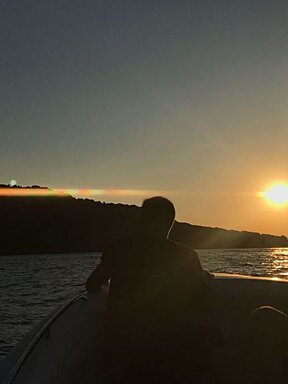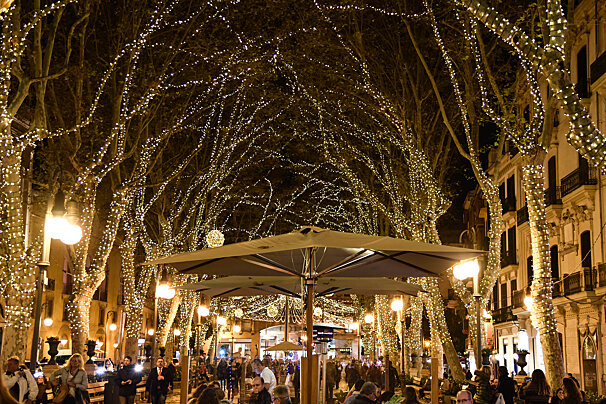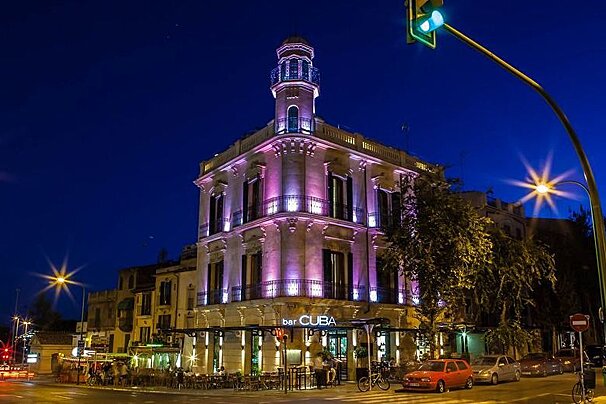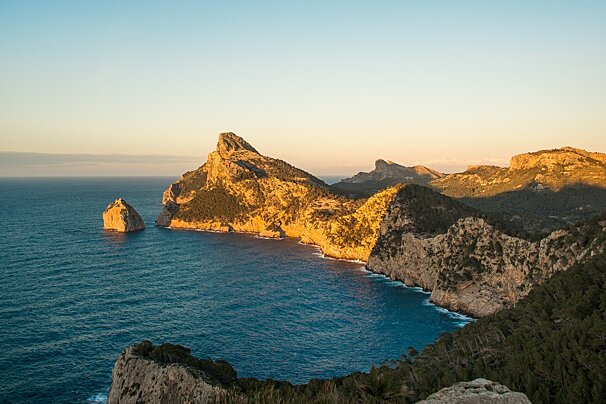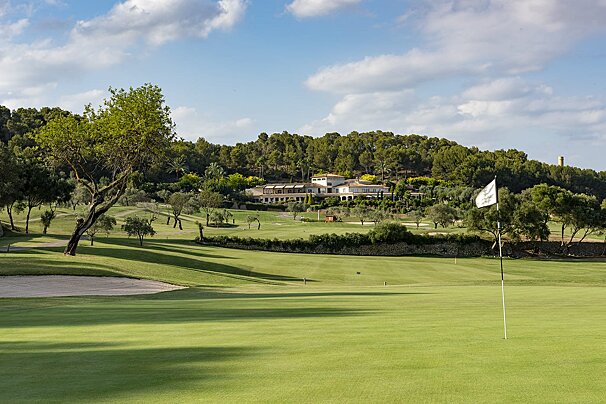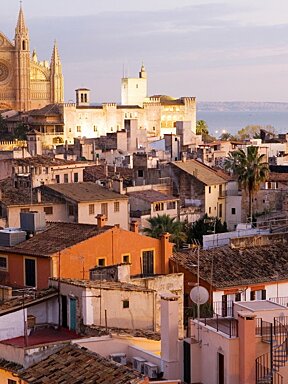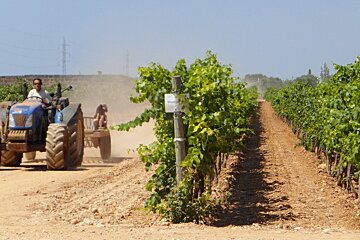
© Tim Milnes

© Tim Milnes
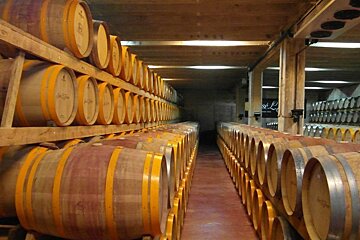
© Tim Milnes
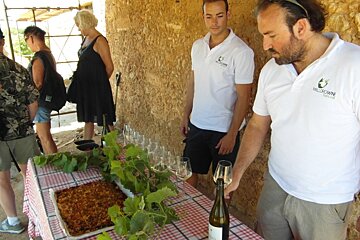
© Tim Milnes

© Tim Milnes

© Tim Milnes
An Afternoon at Mallorca Wine Tours
Try some local vintages & local produce on this vineyard tour
Living in Palma the closest we get to some of Mallorca's local produce is in the supermarket. Lining the shelves are olives, almonds, sobrasada (sausage paste), honey, oranges, lemons and, of course, wine.
Hannah, who describes herself as a "wine enthusiast" asked me to organise a wine tour. I obliged and typed "mallorca wine tour" into Google. To my surprise the first hit was 'Mallorcawinetours.com', too easy!
The website is well presented, allowing you to browse the range of tours on offer - you can do a Daily, Gourmet, Sunset, Finca, Charter - what to choose!? Hannah the "wine enthusiast" suggested to me (the self-proclaimed "food enthusiast") that we should do the Gourmet Tour, to marry our passion for food and wine, or something like that...
The Gourmet Tour is sold accurately on the website as an opportunity to not only taste wines from local vineyards but also some of Mallorca's finest local food produce and delicacies. I clicked to book the tour, entering me into e-mail contact with Julian. Hannah was actually working away and we had to keep changing the dates of the tour with Julian. He was flexible and happy to accommodate us when we eventually finalised a date for three. Hannah's mum, a professional cook, was now to join us. Who better to judge a tour than the "cook", the "wino" and I.
The starting point for the tour is bodega Jose L.Ferrer. For those of you getting there from Palma, the best way is to take the train from Estacio Intermodal at Placa d'Espanya. We took the 09:35 train to Binissalem, the journey is 30 minutes long and we had plenty of time to meander down through the beautiful streets of the old rural town. The bodega is approximately 15 minutes walk from the train station and you can't miss the house sized wine bottles marking the entrance to the vineyard.
We were welcomed by Vanessa who we later learned was originally from the North of Spain, spoke four languages and had a true passion for promoting the island's wine through the tours. Julian, the creator of Mallorca Wine Tours was to take the rest of us in the English speaking group.
Julian explained that he didn’t normally host the tours himself but when he could, he tried to get involved as much as possible. With a certain confidence, pride and passion Julian began the tour in the factory of the bodega. We learned about the processes of making wine and the grapes endemic to Mallorca: Manto negro and Prensal blanc. Huge steel vats, hosting thousands of litres of wine in the fermentation process, loomed over us with just the faintest aroma of wine wafting through the air.
From the factory we were led down to the barrel room and wow! Hundreds of elegant oak barrels neatly fill the whole room. Each one costing 800 euros new, it didn't take long to be in awe of the magnitude of the operation at the largest, most generative bodega in Mallorca. Jose L.Ferrer produces 1.5 million bottles a year. Then into the cave where the sparkling wine is left to ferment in the bottles. Julian explained the whole process which was fascinating and informative: the bottle you buy in the supermarket is the one the Brut has fermented in, with the dead yeast expertly removed by machine or by highly skilled hands, both able to do so without losing any of the good stuff. Who knew?!
In the next cave we received a short history on the differences in cork used to bottle wine - the older and stronger cork is used to age wine, whereas young wines that will not age can be bottled with young cork or plastic caps. The older the cork the more absorbent and protective it is of the wine, allowing it to age in the bottle without it escaping altogether.
We headed back up to ground level and outside for our first tasting session. One white wine, one rose and two reds were presented eloquently for us to taste. The "wino" was in her element. Julian and Vanessa had now been joined by a silent assistant who was setting up the tasting table, with no introduction he was busying himself with preparing the delicacies. Julian gave advice on how to taste the wine and what we should be looking for in the appearance of the wine, its aromas on the nose, on the palate and on the finish. The "wino"offered her opinions, inquisitive as ever she pushed Julian for answers who was happy to assist. He certainly knew his stuff! A bucket was provided to spit out the wine if we wished, but it was too delicious to even contemplate such waste.
To accompany the wine was a savory selection of treats such as the famous Pa amb oli, Mallorcan bread rubbed with tomato pulp, olive oil and sea salt - as Julian described Mallorcans "are born with it and will die with it". A Menorcan cheese was also welcome and well matched with all of the wines. The "cook" was having a fantastic time.
Not quite noon and we were all a little merry and found ourselves riding the Wine Express, the tractor disguised as a train, driven by the silent assistant. It's a bit of a gimmick but actually a great way to take in the Binissalem region and it's lush vineyards. Without the vines in this region it was hard to imagine it being quite as picturesque.
We hopped off the train at one of the oldest Fincas on the island, originally built in 1866 where Julian and the silent assistant had set up a fresh array of wine and Coca de Trampó - a pizza type dish loaded with onions, garlic, tomatoes and sweet peppers. This old and original Finca, currently not in use, belonged to a different bodega - Ribas. The setting was stunning, vineyards stretching into the distance, the sun hot and the sky electric blue.
It was there that the history of the wine growing in Mallorca really came to life. Ribas still hand pick all of their grapes, using old Roman techniques with some of the vines dating back 65-70 years. The roots of these plants can descend down to 20 metres into the soil below, which explains why they survive and grow in such dry conditions, searching what little moisture there is to feed from. Another Roman technique is stone irrigation, which is incredibly useful as the stones keep the soil below moist, protecting any rainwater from evaporation. This whole process is of course more laborious than modern techniques. Nowadays plants are irrigated through clever piping systems and the grapes are machine picked, meaning as many grapes as 20 people can pick in 3 hours can now be picked in one hour by machine.
However more laborious, we learned that using ancient techniques and hand picking the grapes leads to a purer and eventually more delicious wine, once the soils and snails have been removed you are left with the cream of the crop.
The Ribas bodega was created in 1711 and is now run by the 13th generation of the same family of its creators. We were transported to the original house of the family where they make the wine today. It is a large dominant house with grand gardens and a very appealing but private swimming pool. Nestled in the shade were tables laid with food and wine. The "wino", the "cook" and I, now almost beside ourselves with excitement, happily sipped on a rose, a red and a sweet wine whilst tucking into a different but just as tasty Coca de Trampo and Jabugo ham - a cured fatty meat to die for!
The staff at Ribas were just as forthcoming and as knowledgeable as Julian, Vanessa and the silent assistant. Well, the silent partner didn't really say anything but he smiled a lot. Feeling relaxed, full and having enjoyed our eighth glass of wine of the day, we weren't ready to leave! We all bought wines from Ribas, how could we not? And hopped back on the train/tractor back to Jose Ferrer.
I want to thank Julian for what was a very valuable experience, historically enriching and passionately informative. His motive is to reveal a part of Mallorcans that embodies their heritage and is far removed from the beach image of the island. The "cook", the "wino" and I were very satisfied with money well ingested.
We did the Gourmet tour priced at €45 per person. The start time was 10:30 and lasted for almost 4 hours. You can contact Julian directly online by following the links on his website to book the tour of your choice.






